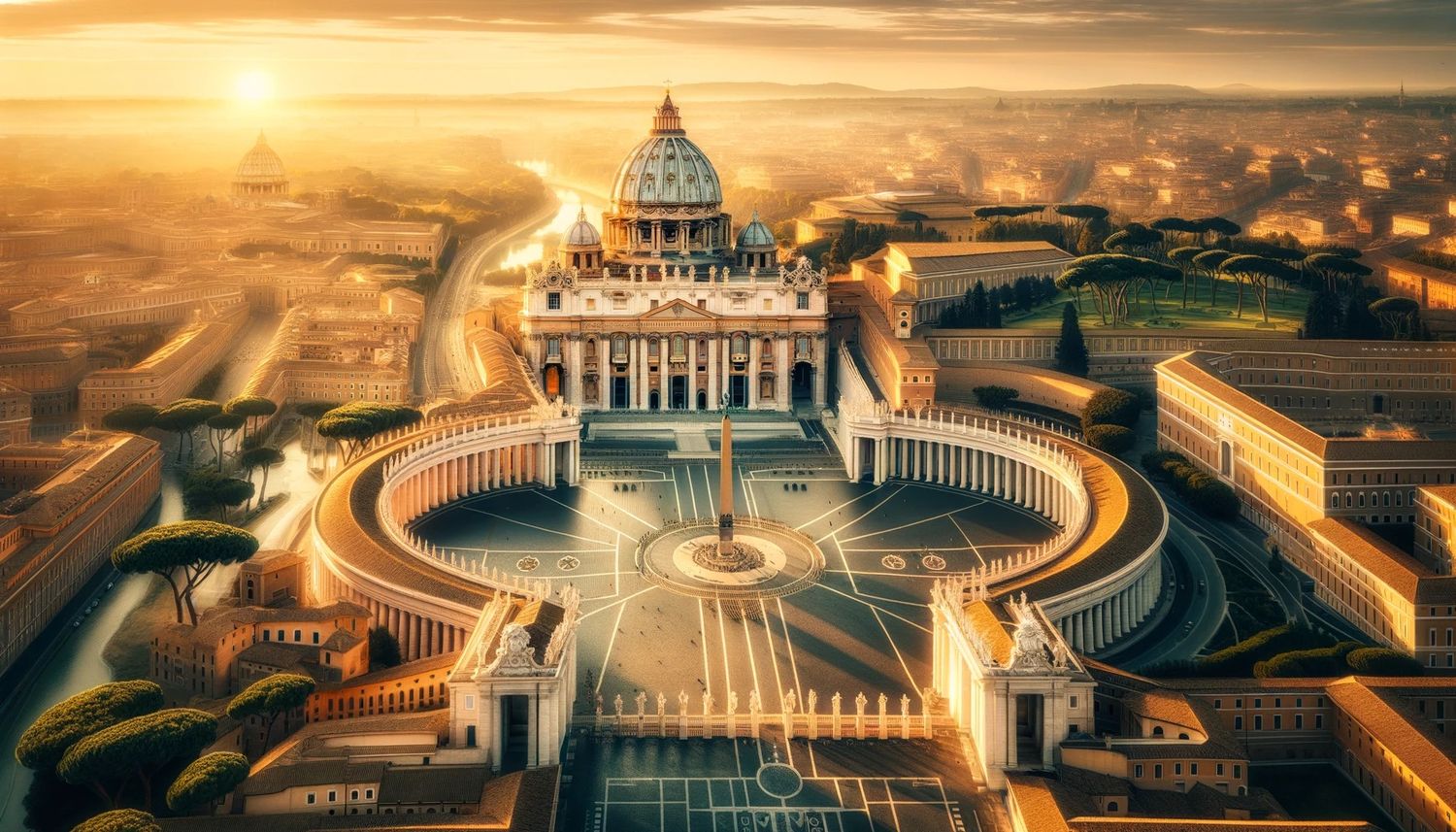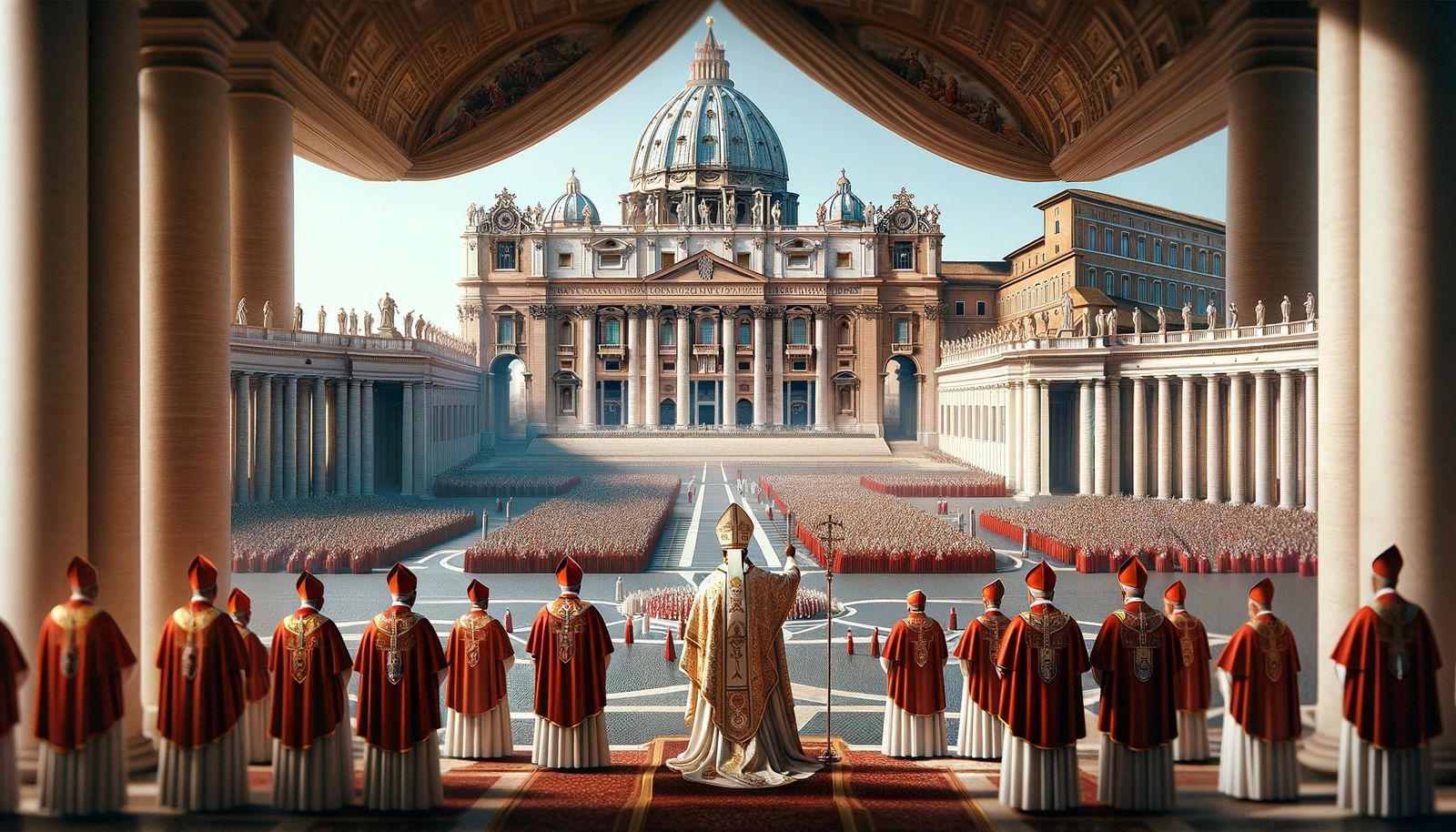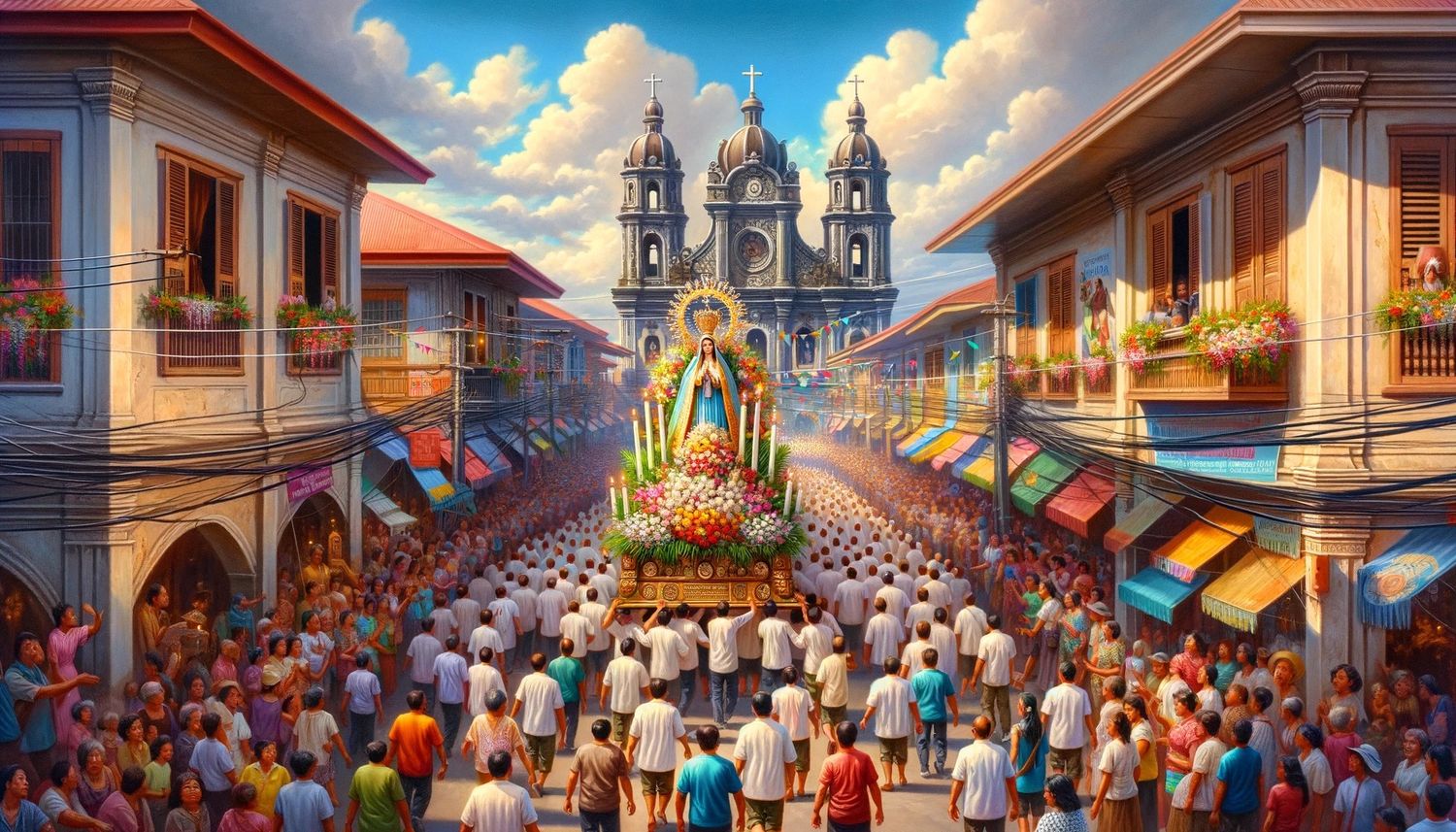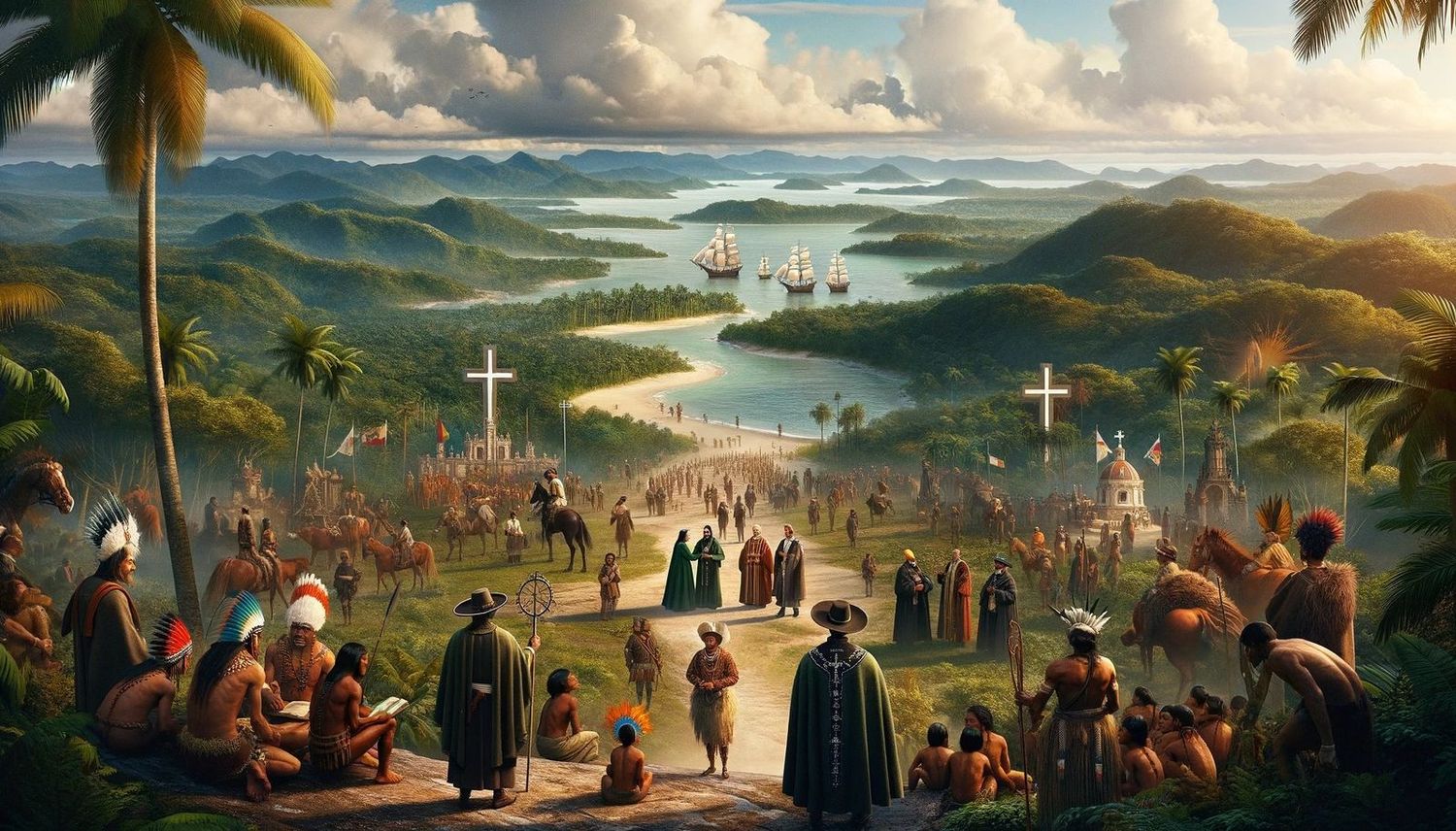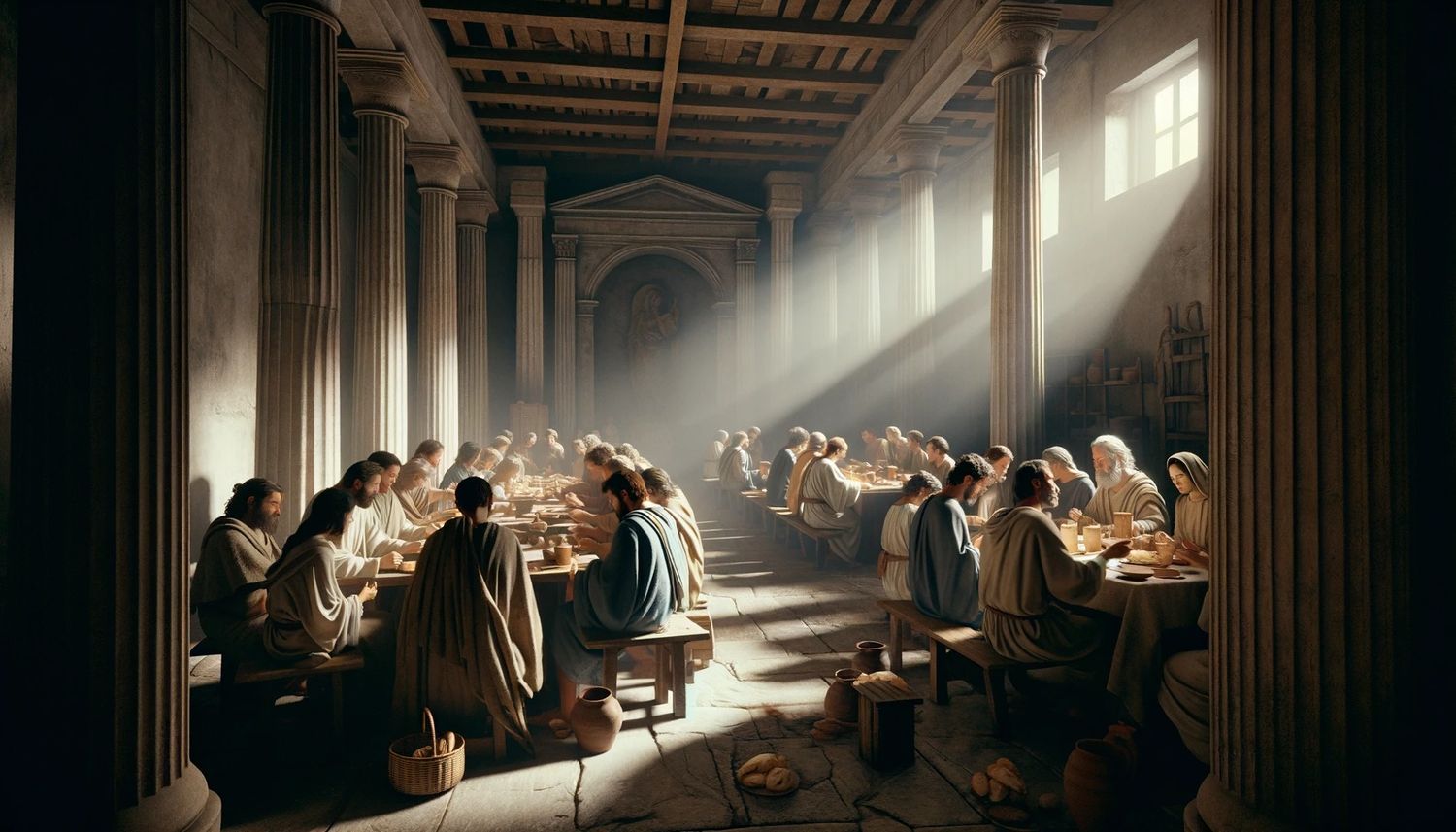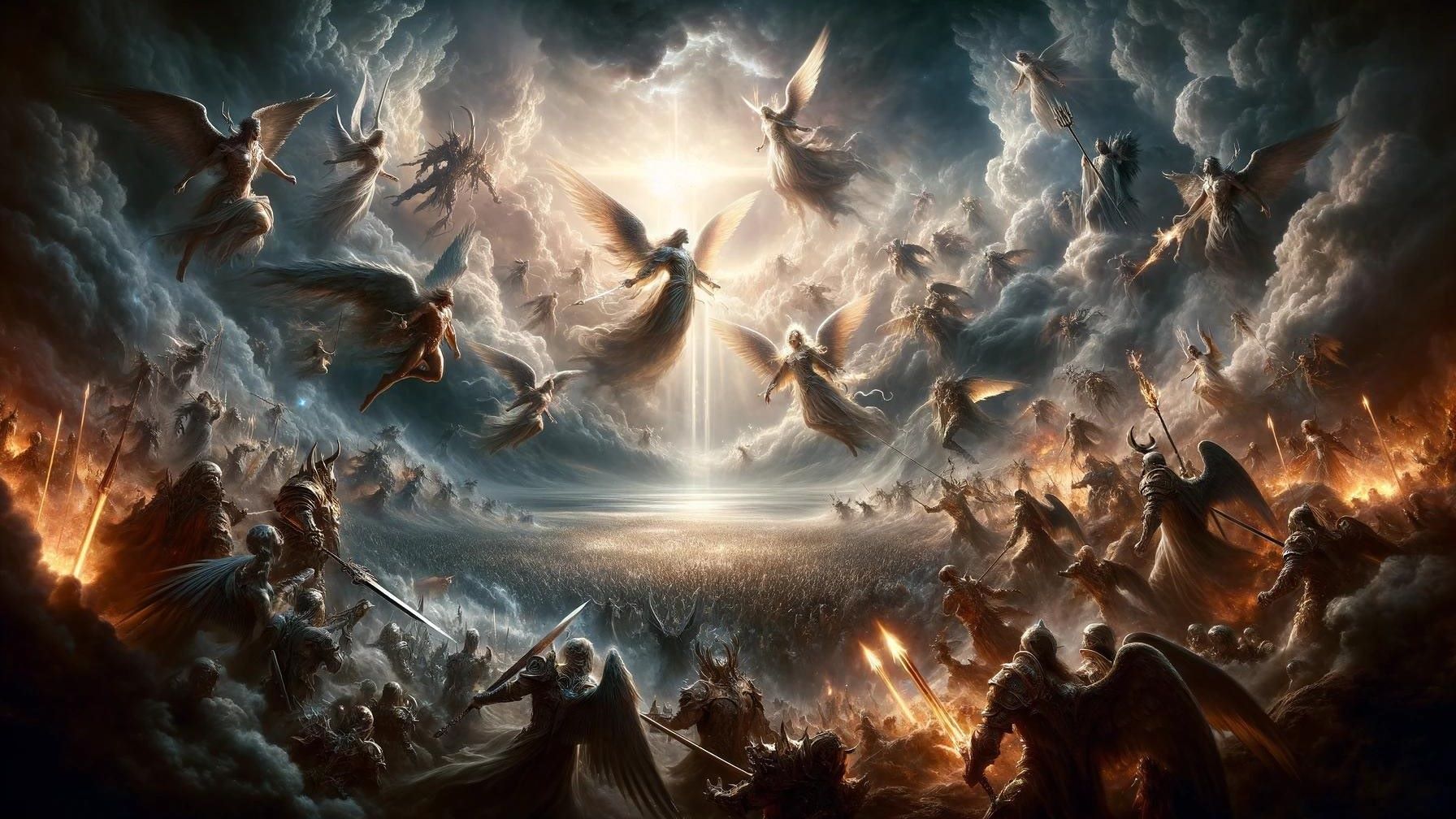Home>Theology and Spirituality>What Is The Only Country In Asia Where Catholicism Is The Majority Religion?


Theology and Spirituality
What Is The Only Country In Asia Where Catholicism Is The Majority Religion?
Published: February 16, 2024
Ericka Andersen, an editor at Christian.net, expertly merges digital strategy with content creation, focusing on faith and societal issues. Her communication skills enhance the platform's engaging narratives, fostering meaningful dialogue on belief's impact on society.
Discover the unique religious landscape of Asia and learn about the predominant Catholicism in this specific country. Explore the intersection of theology and spirituality in this diverse region.
(Many of the links in this article redirect to a specific reviewed product. Your purchase of these products through affiliate links helps to generate commission for Christian.net, at no extra cost. Learn more)
Table of Contents
Introduction
The diverse continent of Asia is home to a rich tapestry of religions, including Buddhism, Hinduism, Islam, and Christianity. Among the Christian denominations, Catholicism holds a significant presence in various Asian countries. However, there is one nation in Asia where Catholicism stands as the predominant religion, shaping its culture, traditions, and way of life. This country is none other than the Philippines.
The history of Catholicism in the Philippines is deeply intertwined with the nation's narrative, dating back to the early 16th century when Spanish explorers and missionaries introduced the faith to the archipelago. Over the centuries, Catholicism has become an integral part of Filipino identity, influencing everything from religious practices and beliefs to social customs and national celebrations.
In this article, we will delve into the unique position of the Philippines as the only country in Asia where Catholicism is the majority religion. We will explore the historical roots of Catholicism in the Philippines, the enduring influence of the faith on Filipino society, and the significance of Catholic traditions in shaping the cultural landscape of this vibrant nation. Join us on a journey to uncover the profound impact of Catholicism in the Philippines and gain a deeper understanding of its role in shaping the country's identity and heritage.
History of Catholicism in Asia
The history of Catholicism in Asia is a testament to the enduring legacy of missionary efforts and the complex interplay of cultures and faith traditions. The arrival of Catholicism in Asia can be traced back to the early days of European exploration and colonization. Portuguese and Spanish explorers, driven by a potent combination of religious zeal and imperial ambitions, set sail for the distant shores of Asia in the 15th and 16th centuries.
One of the pivotal figures in the spread of Catholicism in Asia was the Portuguese explorer Vasco da Gama, who established a sea route to India in 1498. This maritime connection facilitated the arrival of Catholic missionaries in the Indian subcontinent, where they encountered diverse religious and cultural landscapes. The efforts of missionaries such as Francis Xavier, who embarked on extensive missions in India, Japan, and Southeast Asia, played a crucial role in laying the foundations of Catholicism in these regions.
In the Philippines, the arrival of the Spanish conquistadors in the 16th century marked a significant turning point in the history of Catholicism in Asia. Led by Ferdinand Magellan, the Spanish expedition reached the archipelago in 1521, introducing Catholicism to the indigenous populations. The subsequent efforts of Spanish missionaries, including the Augustinians, Franciscans, and Jesuits, led to the widespread adoption of Catholicism among the Filipino people.
The spread of Catholicism in Asia was not without its challenges and complexities. Missionaries encountered resistance from existing religious institutions and cultural practices, leading to a complex interplay of syncretism and religious dialogue. In countries such as Japan, where Catholicism initially gained a foothold, the faith faced persecution and suppression during the Edo period, resulting in the martyrdom of numerous Japanese Christians.
Despite these challenges, Catholicism continued to take root in various parts of Asia, leaving an indelible mark on the religious and cultural landscapes of the region. Today, Catholic communities thrive in countries such as the Philippines, East Timor, and South Korea, contributing to the vibrant tapestry of religious diversity in Asia.
The history of Catholicism in Asia is a testament to the enduring legacy of missionary efforts and the complex interplay of cultures and faith traditions. The arrival of Catholicism in Asia can be traced back to the early days of European exploration and colonization. Portuguese and Spanish explorers, driven by a potent combination of religious zeal and imperial ambitions, set sail for the distant shores of Asia in the 15th and 16th centuries.
One of the pivotal figures in the spread of Catholicism in Asia was the Portuguese explorer Vasco da Gama, who established a sea route to India in 1498. This maritime connection facilitated the arrival of Catholic missionaries in the Indian subcontinent, where they encountered diverse religious and cultural landscapes. The efforts of missionaries such as Francis Xavier, who embarked on extensive missions in India, Japan, and Southeast Asia, played a crucial role in laying the foundations of Catholicism in these regions.
In the Philippines, the arrival of the Spanish conquistadors in the 16th century marked a significant turning point in the history of Catholicism in Asia. Led by Ferdinand Magellan, the Spanish expedition reached the archipelago in 1521, introducing Catholicism to the indigenous populations. The subsequent efforts of Spanish missionaries, including the Augustinians, Franciscans, and Jesuits, led to the widespread adoption of Catholicism among the Filipino people.
The spread of Catholicism in Asia was not without its challenges and complexities. Missionaries encountered resistance from existing religious institutions and cultural practices, leading to a complex interplay of syncretism and religious dialogue. In countries such as Japan, where Catholicism initially gained a foothold, the faith faced persecution and suppression during the Edo period, resulting in the martyrdom of numerous Japanese Christians.
Despite these challenges, Catholicism continued to take root in various parts of Asia, leaving an indelible mark on the religious and cultural landscapes of the region. Today, Catholic communities thrive in countries such as the Philippines, East Timor, and South Korea, contributing to the vibrant tapestry of religious diversity in Asia.
The Philippines: A Catholic Majority
The Philippines stands as a unique testament to the enduring influence of Catholicism in Asia. With a population of over 100 million people, the Philippines is the only country in Asia where Catholicism is the predominant religion. The roots of Catholicism in the Philippines can be traced back to the arrival of Spanish explorers and missionaries in the 16th century, marking the beginning of a profound and enduring religious legacy.
The Spanish conquest of the Philippines, led by Ferdinand Magellan in 1521, laid the groundwork for the introduction of Catholicism to the archipelago. Spanish missionaries, including the Augustinians, Franciscans, and Jesuits, played a pivotal role in spreading the faith among the indigenous populations. The enduring impact of Spanish colonial rule and the integration of Catholicism into the fabric of Filipino society have contributed to the nation's status as a Catholic majority country in Asia.
The influence of Catholicism in the Philippines extends far beyond religious adherence, permeating various aspects of Filipino culture, traditions, and societal norms. The country's rich tapestry of religious festivals, such as the Feast of the Black Nazarene and the Ati-Atihan festival, reflects the deep-rooted Catholic heritage that shapes the collective identity of the Filipino people. The observance of Lent, Holy Week, and Christmas holds profound significance in the lives of Filipinos, underscoring the integral role of Catholic traditions in shaping the rhythm of daily life.
Moreover, the architectural landscape of the Philippines bears the indelible imprint of Catholicism, with historic churches and cathedrals serving as enduring symbols of faith and cultural heritage. Iconic landmarks such as the San Agustin Church in Manila and the Santo Niño Basilica in Cebu stand as testaments to the enduring legacy of Catholicism in the Philippines, drawing pilgrims and visitors from around the world.
The resilience of Catholicism in the Philippines is further exemplified by the deep-seated spirituality and devotion exhibited by Filipino Catholics. The veneration of religious icons, participation in processions, and fervent prayers exemplify the profound intertwining of faith and daily life in the Filipino context. The enduring presence of Catholicism in the Philippines is a testament to the resilience and adaptability of the faith in the face of historical challenges and societal transformations.
In essence, the Philippines stands as a shining example of the profound impact of Catholicism in shaping the cultural, social, and spiritual landscape of a nation. The enduring legacy of Spanish colonial heritage and the integration of Catholic traditions into the fabric of Filipino society have solidified the Philippines' position as the only country in Asia where Catholicism stands as the majority religion, underscoring the profound and enduring influence of the faith in the archipelago.
The Influence of Catholicism in the Philippines
The influence of Catholicism in the Philippines permeates every facet of society, shaping the nation's cultural, social, and spiritual landscape in profound ways. From religious practices and traditions to the arts, language, and governance, the impact of Catholicism is deeply ingrained in the collective identity of the Filipino people.
Cultural Traditions and Festivals
Catholicism has left an indelible mark on the cultural tapestry of the Philippines, giving rise to a vibrant array of religious festivals and traditions. The annual observance of Holy Week, culminating in the reenactment of the Passion of Christ through processions and rituals, holds profound significance for Filipino Catholics. The streets come alive with colorful processions, and devotees engage in acts of penance and devotion, reflecting the deeply rooted spirituality that characterizes Filipino Catholicism.
The Feast of the Black Nazarene in Manila and the Sinulog Festival in Cebu are prime examples of how Catholicism intertwines with Filipino cultural expressions. These festivals blend religious fervor with vibrant street celebrations, showcasing the dynamic fusion of faith and tradition that defines the Filipino experience.
Read more: What Are The Major Beliefs Of Catholicism
Architectural Heritage
The architectural landscape of the Philippines bears the enduring imprint of Catholicism, with majestic churches and cathedrals serving as testaments to the nation's rich religious heritage. Historic landmarks such as the Baroque churches of the Philippines, recognized as UNESCO World Heritage sites, stand as living monuments to the enduring legacy of Spanish colonial influence and Catholic tradition. These architectural marvels not only serve as places of worship but also as repositories of history and art, reflecting the fusion of indigenous craftsmanship with European design elements.
Social and Moral Values
Catholicism has played a pivotal role in shaping the social and moral fabric of Filipino society. The emphasis on compassion, solidarity, and community service, rooted in Catholic social teachings, has contributed to the development of a strong sense of social responsibility and communal support within Filipino communities. The Catholic emphasis on the dignity of every human person has also influenced the Filipino approach to social justice and advocacy for the marginalized and vulnerable members of society.
Family and Community Life
The influence of Catholicism is palpable in the familial and communal dynamics of Filipino society. The centrality of the family unit, underscored by Catholic teachings on marriage and family life, has contributed to the strong emphasis on familial bonds and intergenerational solidarity within Filipino households. The celebration of milestones such as baptisms, weddings, and fiestas reflects the intertwining of Catholic traditions with the rhythms of family and community life in the Philippines.
In essence, the influence of Catholicism in the Philippines extends far beyond religious rituals and beliefs, permeating the very essence of Filipino identity and cultural expression. The enduring impact of Catholicism on the nation's cultural, social, and spiritual landscape underscores its profound and multifaceted influence, shaping the collective ethos of the Filipino people.
Conclusion
In conclusion, the Philippines stands as a testament to the enduring influence of Catholicism in Asia, being the only country in the continent where Catholicism is the majority religion. The historical roots of Catholicism in the Philippines, intertwined with the legacy of Spanish colonialism, have shaped the nation's cultural, social, and spiritual landscape in profound ways. From the architectural heritage of historic churches to the vibrant tapestry of religious festivals and traditions, Catholicism has left an indelible mark on the collective identity of the Filipino people.
The enduring impact of Catholicism in the Philippines extends beyond religious adherence, permeating various aspects of Filipino culture, societal norms, and familial dynamics. The fusion of Catholic traditions with indigenous expressions has given rise to a unique tapestry of cultural heritage, exemplified by the annual observance of Holy Week and the vibrant festivities of the Feast of the Black Nazarene and the Sinulog Festival. These cultural expressions reflect the dynamic interplay of faith and tradition, underscoring the profound influence of Catholicism on the Filipino experience.
Moreover, the architectural landscape of the Philippines bears the enduring imprint of Catholicism, with historic churches and cathedrals serving as living monuments to the nation's rich religious heritage. The Baroque churches of the Philippines, recognized as UNESCO World Heritage sites, stand as testaments to the fusion of indigenous craftsmanship with European design elements, reflecting the enduring legacy of Spanish colonial influence and Catholic tradition.
The influence of Catholicism in the Philippines also extends to the social and moral fabric of Filipino society, shaping values of compassion, solidarity, and communal support. The emphasis on family and community life, rooted in Catholic teachings, has contributed to the development of strong familial bonds and intergenerational solidarity within Filipino households.
In essence, the Philippines stands as a living testament to the profound and enduring influence of Catholicism in shaping the cultural, social, and spiritual landscape of a nation. The integration of Catholic traditions into the fabric of Filipino society has solidified the Philippines' position as the only country in Asia where Catholicism stands as the majority religion, underscoring the profound impact of the faith on the collective ethos of the Filipino people.
